Have you ever wondered how electricity travels safely from power plants to your home? The answer lies in a device you rarely see but heavily rely on: the electrical transformer.
Electrical transformers are crucial components in our power system. They change voltage levels, enabling efficient long-distance transmission and safe local distribution. These devices ensure that the electricity powering our homes and businesses is both reliable and usable.
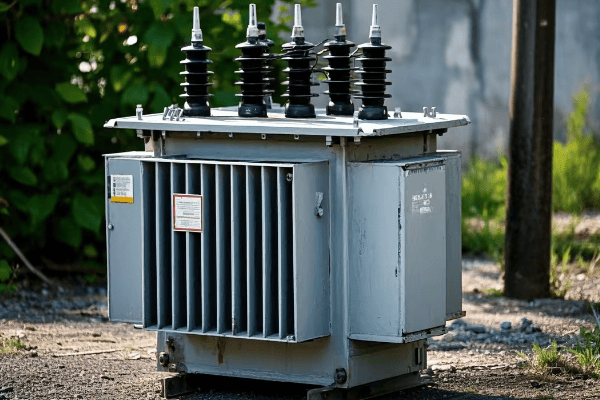
As an electrical engineer with years of experience in the power industry, I've seen firsthand how vital these devices are. Let's explore the world of electrical transformers and discover how they power our daily lives.
The Magic of Voltage Transformation: How Electrical Transformers Power Our Daily Lives?
Imagine trying to drink from a fire hose. That's similar to using electricity straight from a power plant. Transformers solve this problem, making electricity safe and useful for our homes.
Electrical transformers work by changing voltage levels through electromagnetic induction. They step up voltage for efficient long-distance transmission and step it down for safe use in homes and businesses. This process is key to powering our daily lives.
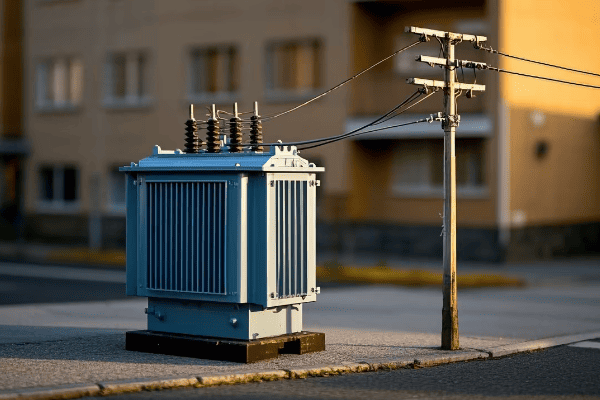
Let's dive deeper into how transformers make this magic happen:
The Basics of Transformer Operation
-
Electromagnetic Induction: This is the key principle behind transformers. When an alternating current flows through a wire, it creates a changing magnetic field. This field can induce a current in another nearby wire.
-
Core and Windings: A transformer has two sets of wire coils (windings) wrapped around an iron core. The primary winding receives the input power, and the secondary winding delivers the output power.
-
Turns Ratio: The number of turns in each winding determines the voltage change. If the secondary has more turns than the primary, the voltage increases. If it has fewer turns, the voltage decreases.
Types of Voltage Transformation
-
Step-Up Transformers: These increase voltage for long-distance transmission. They're used at power plants to boost voltage for efficient transmission.
-
Step-Down Transformers: These reduce voltage for local distribution and use. You'll find these at substations and on utility poles in your neighborhood.
Here's a simple comparison:
| Transformer Type | Input Voltage | Output Voltage | Main Use |
|---|---|---|---|
| Step-Up | 10-20 kV | 100-1000 kV | Power plant to transmission lines |
| Step-Down (Substation) | 100-1000 kV | 10-50 kV | Transmission to distribution |
| Step-Down (Local) | 10-50 kV | 120/240 V | Distribution to homes |
The Impact on Our Daily Lives
Transformers make modern life possible. Here's how:
-
Efficient Power Transmission: By stepping up voltage, we can send power over long distances with minimal losses.
-
Safe Home Use: By stepping down voltage, we can use electricity safely in our homes.
-
Voltage Optimization: Transformers help maintain consistent voltage levels, protecting our appliances and electronics.
-
Isolation: Transformers provide electrical isolation, adding a layer of safety to our power system.
I remember working on a project to upgrade a city's power infrastructure. We replaced old transformers with more efficient models. The result was more stable power and fewer outages for residents. It was a clear demonstration of how these "invisible" devices directly impact our daily lives.
Transformers are the unsung heroes of our electrical system. They work silently and continuously, ensuring that we have safe and usable electricity whenever we need it. From powering our homes to enabling our digital world, transformers play a crucial role in the modern lifestyle we often take for granted.
From Power Plants to Plug Points: The Journey of Electricity Through Different Transformers?
Have you ever thought about the journey electricity takes to reach your home? It's a fascinating trip, and transformers are the tour guides at every stop.
Electricity's journey from power plants to homes involves multiple transformers. Step-up transformers at plants increase voltage for long-distance transmission. Substation transformers then step it down for local distribution. Finally, pole-mounted or underground transformers reduce voltage for safe home use.

Let's follow the path of electricity and meet the transformers along the way:
1. At the Power Plant: Step-Up Transformers
Our journey begins at the power plant. Here's what happens:
- Generators produce electricity at relatively low voltages (10,000 to 25,000 volts).
- Step-up transformers increase this voltage to 100,000 to 1,000,000 volts.
- This high voltage is crucial for efficient long-distance transmission.
2. On the Transmission Lines
Electricity travels long distances on high-voltage transmission lines. During this journey:
- Some power is lost due to resistance in the lines.
- But the high voltage (thanks to step-up transformers) keeps these losses to a minimum.
3. At the Substation: Primary Step-Down Transformers
When electricity reaches your local area, it's time for the first step down:
- Large substation transformers reduce the voltage to about 10,000 to 50,000 volts.
- This prepares the electricity for local distribution.
4. In Your Neighborhood: Distribution Transformers
The final transformation happens near your home:
- Pole-mounted or underground transformers further reduce the voltage.
- They bring it down to the standard 120/240 volts used in U.S. homes.
Here's a table summarizing this journey:
| Location | Transformer Type | Input Voltage | Output Voltage |
|---|---|---|---|
| Power Plant | Step-Up | 10-25 kV | 100-1000 kV |
| Substation | Primary Step-Down | 100-1000 kV | 10-50 kV |
| Neighborhood | Distribution | 10-50 kV | 120/240 V |
The Importance of Each Stage
Each transformer in this journey plays a crucial role:
-
Step-Up Transformers: Enable efficient long-distance transmission by reducing current and thus power losses.
-
Substation Transformers: Bridge the gap between transmission and distribution voltages.
-
Distribution Transformers: Make electricity safe for home use while maintaining enough voltage for all your appliances.
I once worked on a project tracing the path of electricity from a hydroelectric dam to a small town. We calculated that without the transformers, the power losses would have been so high that the town would have received less than 10% of the generated electricity. With transformers, over 90% made it to the end users. It was a powerful demonstration of how crucial these devices are in our power system.
This journey, facilitated by transformers at each stage, ensures that the massive power generated at plants can be efficiently transmitted and safely used in our homes. Transformers are the unsung heroes that make our modern electrical grid possible, working silently to power our world.
Safeguarding Your Home: The Crucial Role of Transformers in Residential Power Supply?
Have you ever plugged in an appliance without worrying about it exploding? You can thank transformers for that peace of mind. They're the silent guardians of your home's electrical system.
Transformers play a crucial role in safeguarding residential power supply. They reduce high distribution voltages to safe levels for home use, regulate voltage fluctuations, and provide electrical isolation. This ensures the safety and reliability of the electricity powering our homes.
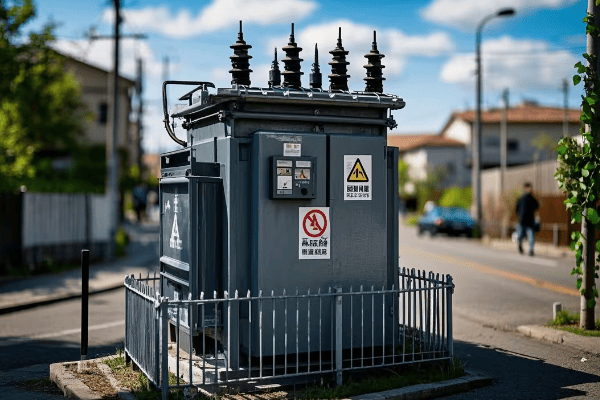
Let's explore how transformers protect your home:
1. Voltage Step-Down
The most obvious role of residential transformers is voltage reduction:
- They take the medium voltage from distribution lines (typically 4-34.5 kV).
- They reduce it to the standard residential voltage (120/240 V in the U.S.).
- This makes the electricity safe for use with standard household appliances and electronics.
2. Voltage Regulation
Transformers help maintain stable voltage levels:
- They can adjust their output slightly to compensate for voltage fluctuations.
- This protects your appliances from damage due to over or under-voltage.
3. Electrical Isolation
Transformers provide a crucial safety feature through electrical isolation:
- There's no direct electrical connection between the primary (input) and secondary (output) sides.
- This helps prevent high voltage from entering your home during faults or surges.
4. Fault Current Limitation
Transformers can help limit the impact of electrical faults:
- Their impedance naturally limits the amount of current that can flow during a short circuit.
- This can prevent more severe damage and improve safety.
Here's a comparison of power before and after the residential transformer:
| Aspect | Before Transformer | After Transformer |
|---|---|---|
| Voltage | 4,000-34,500 V | 120/240 V |
| Current | Low | Higher |
| Safety for Direct Use | Extremely Dangerous | Safe |
| Fault Current | Very High | Limited |
The Impact on Home Safety
The role of transformers in home safety cannot be overstated:
-
Appliance Protection: By providing the correct voltage, transformers protect your expensive electronics and appliances.
-
Fire Prevention: By limiting fault currents, transformers reduce the risk of electrical fires.
-
Shock Prevention: The lower voltage and electrical isolation significantly reduce the risk of severe electric shocks.
-
Reliability: Voltage regulation ensures a more consistent power supply, reducing the likelihood of brownouts or equipment malfunction.
I once investigated a case where a neighborhood experienced frequent appliance failures. We discovered that the local transformer was old and not regulating voltage properly. After replacing it, the problems disappeared. It was a clear example of how crucial these devices are for protecting our homes and possessions.
Transformers are truly the unsung heroes of our home electrical systems. They work tirelessly to ensure that the electricity entering our homes is safe, stable, and reliable. Next time you safely plug in an appliance, remember the important role transformers play in making that possible.
Transformers and Green Energy: Bridging Renewable Sources to Your Home?
Have you ever wondered how the energy from solar panels or wind turbines makes it to your home? The answer involves a special role for our friends, the transformers.
Transformers play a crucial role in integrating renewable energy into the power grid. They handle the variable output of renewables, enable long-distance transmission from remote generation sites, and help maintain grid stability. This makes it possible for green energy to power our homes reliably.
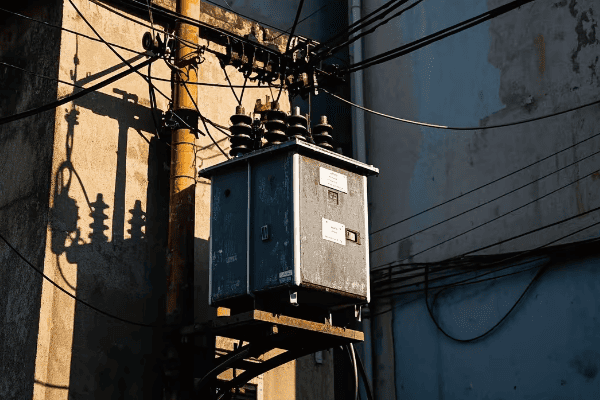
Let's explore how transformers are helping to green our energy supply:
1. Handling Variable Output
Renewable sources like wind and solar have variable output. Transformers help manage this:
- Voltage Regulation: Advanced transformers can adjust their output to handle fluctuations in renewable generation.
- Wide Range Operation: They're designed to operate efficiently across varying loads, important for solar and wind power.
2. Enabling Long-Distance Transmission
Many renewable sources are far from population centers. Transformers make efficient transmission possible:
- Step-Up Transformers: Increase voltage for long-distance transmission from remote wind or solar farms.
- HVDC Converter Transformers: Enable efficient long-distance transmission, crucial for offshore wind farms.
3. Grid Integration
Transformers help integrate renewables into the existing grid:
- Bidirectional Power Flow: Handle power flow both to and from the grid, important for systems with local generation.
- Harmonic Mitigation: Deal with harmonics introduced by inverters in solar and wind systems.
4. Microgrids and Local Generation
Transformers play a key role in microgrid systems:
- Isolation: Provide electrical isolation between the microgrid and main grid.
- Voltage Matching: Ensure locally generated power matches grid voltage for seamless integration.
Here's a comparison of transformer applications in conventional and renewable energy:
| Aspect | Conventional Power | Renewable Energy |
|---|---|---|
| Power Flow | Mostly One-Way | Often Bidirectional |
| Output Stability | Relatively Stable | Highly Variable |
| Location | Near Population Centers | Often in Remote Areas |
| Harmonics | Limited | Significant (due to inverters) |
Challenges and Solutions
Integrating renewables presents unique challenges that transformers help solve:
-
Voltage Fluctuations:
- Challenge: Rapid changes in renewable output can cause voltage swings.
- Solution: Advanced voltage regulation in transformers.
-
Reverse Power Flow:
- Challenge: Power flowing from consumers back to the grid.
- Solution: Bidirectional transformers and smart grid technologies.
-
Harmonics:
- Challenge: Inverters in solar and wind systems introduce harmonics.
- Solution: Transformers designed for harmonic mitigation.
-
Remote Locations:
- Challenge: Connecting distant renewable plants to the grid.
- Solution: High-voltage transformers for efficient long-distance transmission.
I recently worked on a project integrating a large solar farm into a rural grid. The variable output was causing stability issues until we installed advanced transformers with dynamic voltage regulation. The improvement was immediate - the local grid became more stable, and the solar farm could operate at full capacity.
Transformers are playing a vital role in our transition to green energy. They're not just passive components but active enablers of our renewable energy future. As we continue to increase our reliance on renewable sources, the role of these adaptable and resilient transformers will only grow in importance.
Smart Transformers: Revolutionizing Home Energy Efficiency and Management?
Imagine a world where your home's power supply automatically adjusts to your needs, saving energy and money. This isn't science fiction - it's the promise of smart transformers.
Smart transformers are revolutionizing home energy management. They can monitor power usage, adjust voltage levels in real-time, and communicate with smart home systems. This enables more efficient energy use, better integration of renewable sources, and improved grid stability.
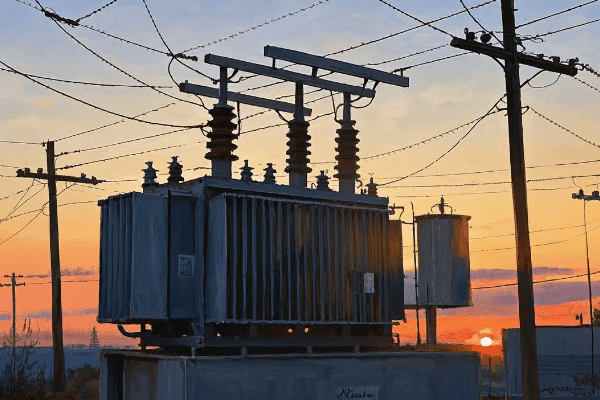
Let's explore how smart transformers are changing the game:
1. Real-Time Monitoring and Adjustment
Smart transformers go beyond simple voltage conversion:
- Power Quality Monitoring: They can detect and sometimes correct issues like voltage sags or harmonics.
- Load Balancing: They can adjust to changing demand, optimizing efficiency.
- Fault Detection: Quick identification of problems can prevent outages.
2. Communication and Integration
These transformers are part of the broader smart grid:
- Two-Way Communication: They can send and receive data from utility control centers.
- Smart Meter Integration: Work with smart meters for more accurate billing and usage tracking.
- Home Energy Management Systems: Can integrate with smart home systems for optimized energy use.
3. Renewable Energy Integration
Smart transformers are crucial for home renewable energy systems:
- Bidirectional Power Flow: Handle power flowing both to and from homes with solar panels.
- Microgrid Support: Enable seamless switching between grid and local power sources.
4. Predictive Maintenance
Smart transformers can predict and prevent problems:
- Condition Monitoring: Continuous monitoring of key parameters like temperature and oil condition.
- Lifespan Optimization: Adjust operation to extend transformer life.
- Maintenance Scheduling: Alert utilities to potential issues before they cause outages.
Here's a comparison of traditional and smart transformers:
| Feature | Traditional Transformer | Smart Transformer |
|---|---|---|
| Voltage Regulation | Fixed or manual adjustment | Real-time automatic adjustment |
| Monitoring | Basic or none | Comprehensive real-time monitoring |
| Communication | None | Two-way with grid and home systems |
| Fault Response | Passive protection | Active fault prediction and mitigation |
| Renewable Integration | Limited capabilities | Advanced features for renewable support |
The Impact on Home Energy Management
Smart transformers are changing how we use energy at home:
-
Energy Efficiency: By optimizing voltage and reducing losses, they can significantly cut energy waste.
-
Cost Savings: More efficient energy use and better integration of home renewables can lower electricity bills.
-
Reliability: Predictive maintenance and quick fault response mean fewer and shorter outages.
-
Green Energy Support: Better handling of variable renewable energy makes it easier to use solar or wind power at home.
-
Demand Response: Can participate in utility demand response programs, potentially earning homeowners credits or lower rates.
I recently consulted on a pilot project installing smart transformers in a residential neighborhood. The results were impressive - overall energy efficiency improved by 15%, and the integration of local solar installations became much smoother. Residents saw lower bills and fewer power quality issues.
Smart transformers are at the forefront of the smart grid revolution. They're not just about delivering power - they're about delivering it intelligently, efficiently, and in a way that supports our evolving energy needs. As we move towards a more distributed and renewable-based energy system, smart transformers will play a crucial role in making our homes more energy-efficient and our grid more resilient.
Future Prospects
The potential of smart transformers is just beginning to be realized:
-
AI Integration: Future smart transformers may use artificial intelligence to predict energy needs and optimize distribution even more effectively.
-
Electric Vehicle Support: They could help manage the increased load from EV charging, perhaps even enabling bidirectional charging where EVs can give power back to the grid.
-
Energy Storage Integration: Some concepts combine smart transformers with energy storage capabilities, further enhancing grid stability and efficiency.
-
Cybersecurity: As these devices become more connected, ensuring their security will be crucial. Future designs will likely incorporate advanced cybersecurity features.
Smart transformers are set to play a pivotal role in the future of home energy management. They're not just an upgrade to existing technology, but a fundamental shift in how we interact with and manage our energy use at home.
Conclusion
Electrical transformers are the unsung heroes of our power system, working tirelessly to ensure safe and efficient electricity delivery from grid to home. From voltage transformation to enabling green energy and smart grid technologies, transformers are evolving to meet our changing energy needs and paving the way for a more sustainable and efficient future.


